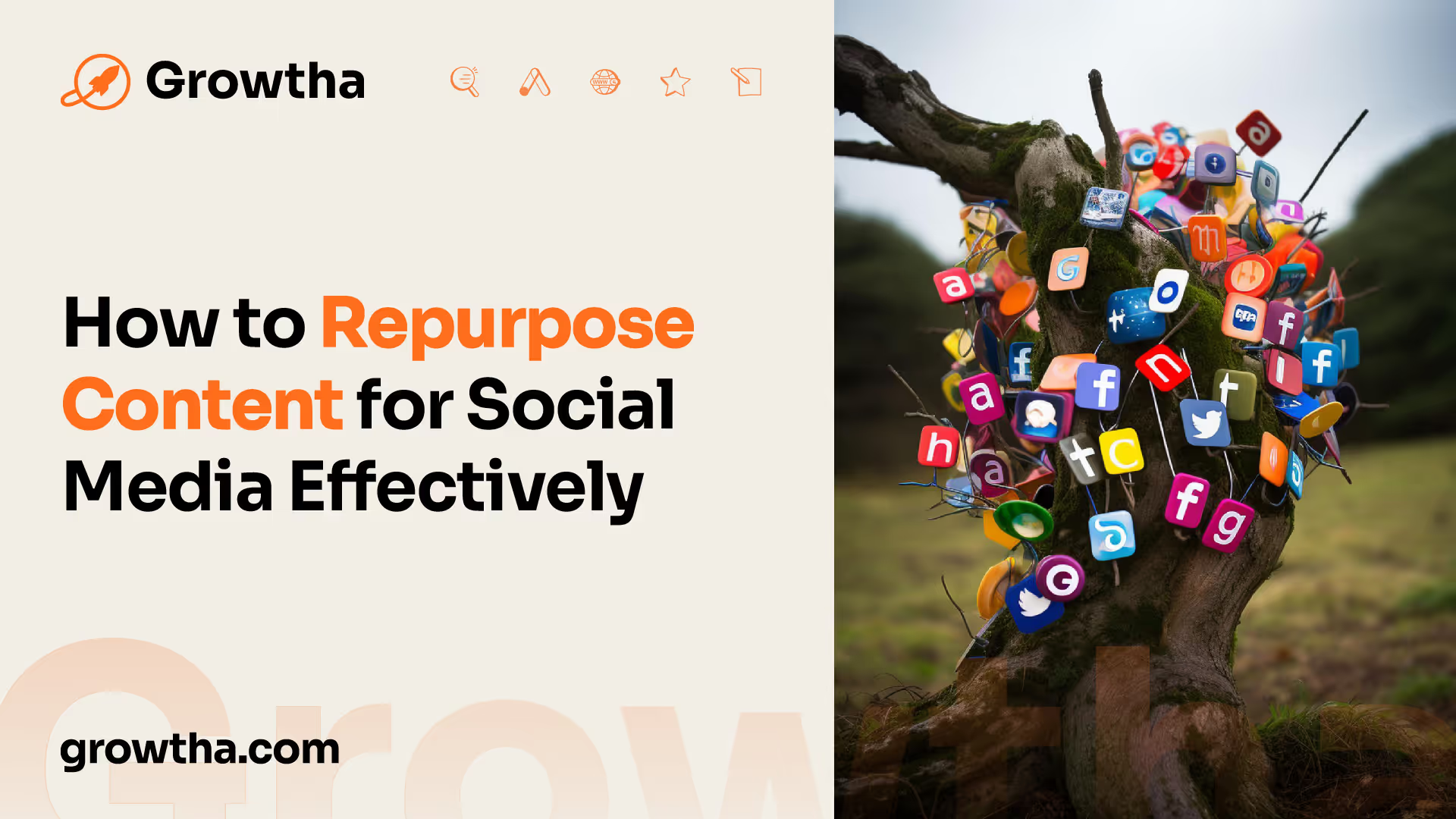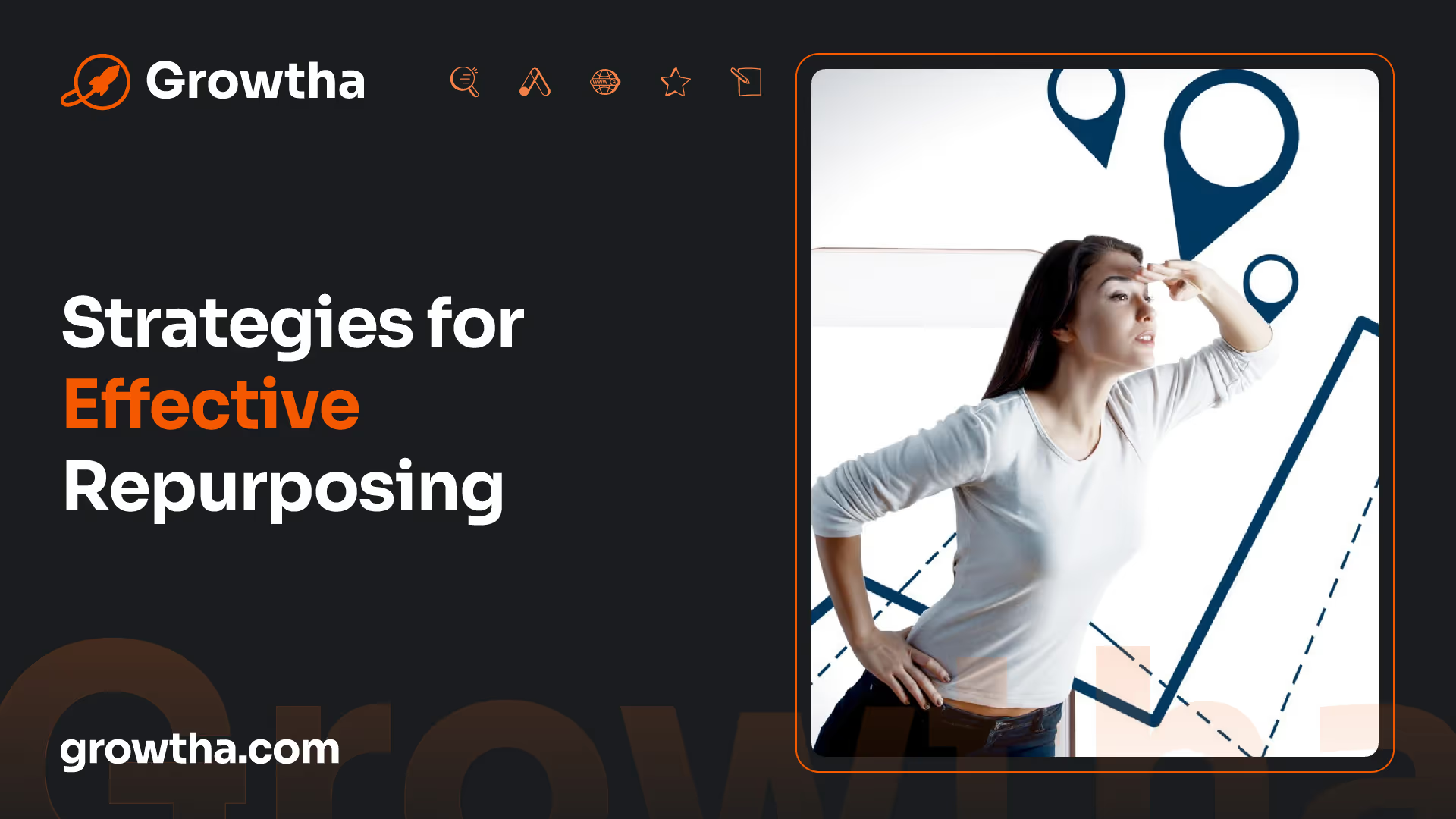How to Repurpose Content for Social Media Effectively
To effectively maximize the reach of your content, understanding the concept of content repurposing is essential.


How to Repurpose Content for Social Media Effectively
Maximizing Content Reach
To effectively maximize the reach of your content, understanding the concept of content repurposing is essential. Repurposing content involves taking a single piece of content and adapting it into different formats to expand its reach, save time, and create more effectively based on real data.
Understanding Content Repurposing
Content repurposing is the practice of getting the most out of a single piece of content by repackaging it in various formats. Instead of creating new content from scratch, repurposing allows you to leverage existing content and give it new life. By repurposing content, you can diversify the ways to reach people online, even without a large team, expanding your reach and impacting a larger audience.
Benefits of Repurposing Content
Repurposing content offers several benefits that can significantly enhance your content strategy. These benefits include:
- Time-Saving: Repurposing content effectively takes time, but it is much less time-consuming than creating something entirely from scratch. By repurposing existing content, you can save time and allocate it to other important tasks, improving overall efficiency in content creation.
- Expansion of Reach: By repurposing content into different formats, such as videos, infographics, or podcasts, you can reach a wider audience. Different people consume content in different ways, and by diversifying your content formats, you can cater to different preferences and increase your reach.
- Focus on Proven Content: Utilizing a content repurposing strategy allows you to focus on already proven content that resonates with your audience. Instead of guessing what might work, you can repurpose content that has already shown success, eliminating the need for extensive trial and error. This enables you to create content more efficiently based on proven data.
- SEO Benefits: Repurposing content can potentially boost SEO, especially when multiple pieces of content are focused on the same target keyword. By repurposing content and optimizing it for search engines, you increase the chances of ranking higher in search engine results and attracting organic traffic to your website [1].
By understanding the concept of content repurposing and the benefits it offers, you can make the most of your existing content and effectively maximize its reach. Repurposing content not only saves time but also allows you to connect with a larger audience, focus on proven content, and potentially enhance your SEO efforts.

Strategies for Effective Repurposing
To effectively repurpose content for social media, it's important to employ effective strategies and utilize appropriate tools. This section will explore three strategies that can enhance your content repurposing efforts: leveraging tools for organization, utilizing Canva for visual transformation, and harnessing LinkedIn Slideshare.
Leveraging Tools for Organization
Repurposing content requires careful organization and planning. By utilizing tools designed for content repurposing, you can streamline your workflow and ensure efficiency. These tools allow you to manage and repurpose content effectively, freeing up time for other tasks.
One popular tool for content organization is BuzzSumo. BuzzSumo helps you identify high-performing content by analyzing social media engagement and backlinks [1]. By understanding what content resonates with your audience, you can focus on repurposing already proven content, eliminating guesswork and optimizing your efforts.
Utilizing Canva for Visual Transformation
Visual content plays a crucial role in social media engagement. Canva is a powerful tool that can assist in transforming your content into visually appealing formats. With Canva, you can create reusable templates, infographics, and social media graphics. The tool offers a library of graphics, photos, and icons, enabling you to customize your visuals and make them more engaging.
By utilizing Canva's user-friendly interface and pre-designed templates, you can easily transform your content and enhance its visual appeal. This helps capture the attention of your target audience and encourages social media sharing.
Harnessing LinkedIn Slideshare
LinkedIn Slideshare is an effective hosting service that allows you to repurpose your content for a professional audience. It enables you to share presentations, infographics, documents, and videos specifically tailored for a professional audience. By utilizing LinkedIn Slideshare, you can complement your content on platforms like Facebook, Twitter, or YouTube, ensuring that your message reaches a wider audience [2].
LinkedIn Slideshare provides a platform for delivering content that aligns with the expectations of professionals. This helps establish credibility and expertise in your industry while expanding your reach.
By employing tools for organization, utilizing Canva for visual transformation, and harnessing LinkedIn Slideshare, you can effectively repurpose your content for social media. These strategies enable you to optimize your resources, engage your audience with visually appealing content, and reach new audiences on various platforms. Remember to adapt and edit your content to fit the new format, audience, and goals, ensuring that your message remains consistent and relevant [3].

Enhancing SEO through Repurposing
In the digital landscape, repurposing content can be a powerful tool for enhancing search engine optimization (SEO) efforts. By repurposing existing content, marketers can give their website an SEO boost and potentially improve search engine rankings. Let's explore how repurposing content can boost SEO and its impact on search engine rankings.
Boosting SEO with Repurposed Content
Repurposing content can provide a boost to SEO by signaling to search engines that your website is active and relevant. When you repurpose content, you create new opportunities for search engines to crawl and index your website. This increased activity and fresh content can improve your website's visibility and increase the chances of ranking higher in search engine results.
By repurposing content, you can also target the same keyword or topic from multiple angles. This focused approach allows you to create a cluster of content around a specific keyword, which can strengthen your website's authority and relevance in the eyes of search engines [1].
For example, if you have a blog post about "Healthy Eating Tips," you can repurpose it into an infographic, a video, or a podcast episode. These different formats not only cater to different audience preferences but also provide opportunities to optimize the content for specific keywords. This multi-channel approach can increase your website's visibility and attract a wider audience.
Impact on Search Engine Rankings
Repurposing content can have a positive impact on search engine rankings. When search engines see that your website consistently produces high-quality and relevant content across various platforms, it can improve your website's authority and credibility. This, in turn, can lead to higher rankings in search engine results.
Additionally, repurposing content allows you to leverage different platforms and formats, such as social media, videos, or e-books. Each piece of repurposed content presents an opportunity to attract inbound links, social shares, and engagement. These signals are valuable to search engines, as they indicate that your content is valuable and worth promoting.
By repurposing content and optimizing it for SEO, you can not only reach a wider audience but also improve your website's search engine rankings. It's important to maintain consistent messaging and ensure that repurposed content aligns with your overall SEO strategy.
Remember, repurposing content is not only beneficial for SEO but also for maximizing your content's reach, saving time and resources, and catering to different audience preferences. By repurposing strategically, you can unlock the full potential of your content and achieve your marketing goals while boosting your website's SEO.
Overcoming Content Creation Challenges
Creating high-quality content consistently can be a challenge for marketers. However, by addressing the content workflow and simplifying the content creation process, these challenges can be overcome.
Addressing Marketers' Content Workflow
Marketers often face difficulties in their content workflow, including planning, creation, and publishing. According to a study, 32% of marketers rate their own content creation workflow between "fair" and "poor" [2]. This highlights the need for strategies to streamline and optimize the content creation process.
To address content workflow challenges, marketers can leverage tools like Airtable, which helps create an organized database of content. This allows for easy tracking of ideas, planning, and repurposing content into various formats that are valuable to target audiences [2]. By having a systematic approach to content management, marketers can enhance efficiency and ensure a smooth workflow.
Simplifying Content Creation Process
One effective way to overcome content creation challenges is by repurposing existing content. Repurposing involves transforming content from one format to another, allowing marketers to maximize the initial investment in content creation and increase efficiency and cost-effectiveness [4].
Repurposing existing content not only saves time and resources but also provides an opportunity to reach a wider audience. It allows marketers to adapt their content to different platforms and formats, catering to the preferences of their target audience. By repurposing content, marketers can breathe new life into their existing assets, extending their reach and maximizing their impact.
To simplify the content creation process, marketers can explore different ways to repurpose their content. This can include transforming blog posts into social media graphics, creating infographics from research reports, or converting videos into podcasts. By repackaging content in various formats, marketers can deliver their message through different channels, engaging their audience effectively.
In addition to repurposing, marketers can leverage content creation tools that facilitate the process. These tools can help automate certain tasks, provide templates for different formats, and simplify the overall workflow. By utilizing these tools, marketers can save time and resources while maintaining the quality and consistency of their content.
By addressing the content workflow and embracing the power of repurposing, marketers can overcome content creation challenges. With an organized approach and the right tools, they can streamline their processes, optimize their resources, and create impactful content that resonates with their audience.
Tailoring Content for Social Media
When repurposing content for social media, it's important to consider the unique characteristics and preferences of each social platform. By tailoring your content to suit the specific requirements and expectations of different platforms, you can effectively engage your audience and maximize your reach.
Repurposing Across Social Platforms
Social media platforms offer various formats for content, including video, audio, text, and images. Repurposing content across different platforms allows you to leverage the strengths of each channel and cater to the preferences of your audience.
For example, you can use a Facebook post to develop a Facebook or Instagram Reel, pulling quotes from a LinkedIn post to create a series of tweets, or repurposing tweets to make posts, Reels, Stories, or TikToks. By adapting your content to fit various formats, you can diversify your social media presence and capture the attention of different segments of your audience [5].
To ensure the success of your repurposed content, it's essential to understand the unique characteristics and user behaviors of each platform. This knowledge will guide you in customizing your content and optimizing it for maximum impact on each platform.
Customizing Content for Audience Preferences
Audience preferences can vary across different social media platforms. To effectively engage your audience, it's crucial to customize your content to align with their preferences and expectations.
For instance, blog content can be repurposed by using text from blog posts to create Twitter posts, status updates, or LinkedIn articles. You can also combine blog post excerpts or summaries with images, visual effects, or video snippets to create engaging social media content. Additionally, you can turn your blog posts into scripts for long-form video content, expanding the reach and impact of your original content [5].
By understanding your audience and the platforms they frequent, you can tailor your content to suit their preferences. This customization may involve adapting the tone, format, and messaging to resonate with the specific audience demographics and behaviors associated with each platform.
Remember, each social media platform has its own preferred format for content, whether it's video, audio, text, or images. Repurposed content should be matched to the format requirements and capabilities of each channel, ensuring that your content aligns with the platform's user experience and provides value to your audience.
By repurposing your content across social platforms and customizing it to meet audience preferences, you can effectively extend your reach, engage your audience, and make the most of your content assets.
Tools for Efficient Content Repurposing
To effectively repurpose content for social media, utilizing the right tools can streamline the process and maximize results. Two valuable tools for content repurposing are BuzzSumo and HockeyStack.
Leveraging BuzzSumo for Content Selection
BuzzSumo is a powerful tool that helps identify content that resonates with users on social media platforms. It provides insights into the popularity and engagement levels of various content pieces, aiding in the selection of content suitable for repurposing Content Marketing Institute.
By analyzing the most shared and engaged-with content in your industry, you can identify trends, topics, and formats that have proven success. This information enables you to make informed decisions about which content to repurpose. By leveraging BuzzSumo, you can identify high-performing content that aligns with your target audience's interests and preferences.
Analyzing Performance with HockeyStack
HockeyStack is a valuable tool for tracking and analyzing the performance of your repurposed content. It provides insights into metrics such as revenue generated, conversions, visitor engagement, and the quality of inbound leads Content Marketing Institute.
By tracking these key metrics, HockeyStack helps you identify the most successful repurposed content pieces. It enables you to measure the impact of your repurposing efforts and make data-driven decisions for future content initiatives. By understanding which repurposed content performs best, you can optimize your strategy and focus on the types of content that resonate most with your audience.
Using these tools in combination with other repurposing strategies can enhance the effectiveness of your content repurposing efforts. By selecting the right content with BuzzSumo and analyzing its performance with HockeyStack, you can ensure that your repurposed content is engaging, relevant, and impactful on social media platforms.
References
[1]: https://www.searchenginejournal.com/repurposing-content/483605/
[2]: https://www.wochit.com/blog/6-tools-to-help-you-repurpose-your-content/
[3]: https://www.linkedin.com/advice/1/whats-best-way-edit-content-multiple-platforms
[4]: https://www.sprinklr.com/blog/repurposing-content-for-social-media/
[5]: https://www.loomly.com/blog/repurposing-content-for-social-media/
[6]: https://www.linkedin.com/advice/0/how-can-you-optimize-repurposed-content-each-cw3mf







